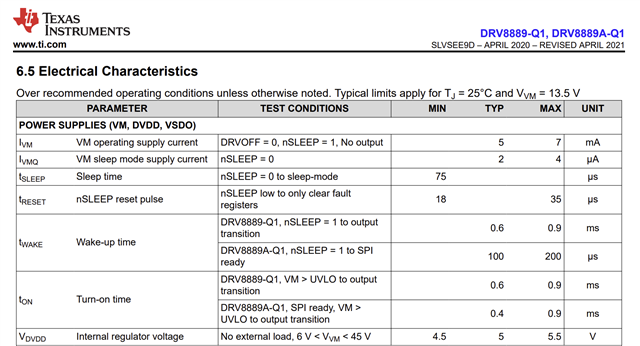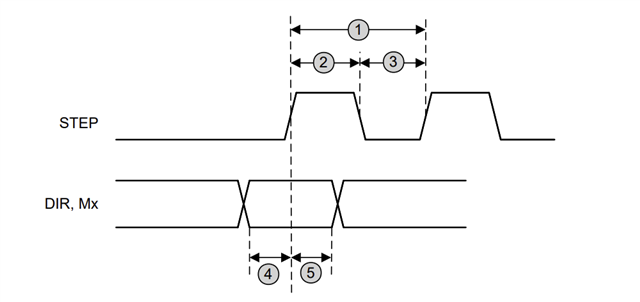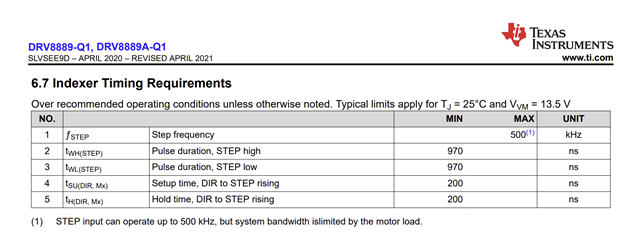Tool/software:
I am using an STM32 microcontroller with the DRV8889 driver to control a bipolar stepper motor. After power-up, the motor consistently misses the first two step pulses—it only starts moving from the third pulse onward (sometimes from second pulse). Additionally, when the driver is brought out of sleep mode, the motor does not respond to the first step pulse after wake-up
for (int i=0; i<1000; i++){
WAKE_CHART_DRIVER();
HAL_Delay(2);
ENABLE_CHART_OUTPUT();
_chart_steps_gpio(1, 1, 5);
step_count++;
DISABLE_CHART_OUTPUT();
SLEEP_CHART_DRIVER();
HAL_Delay(1000);
}





